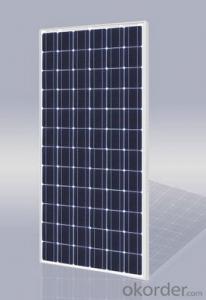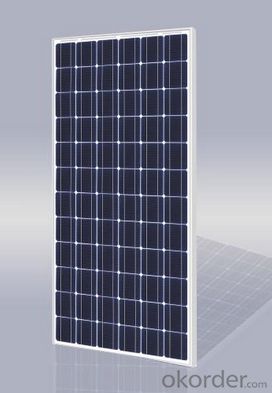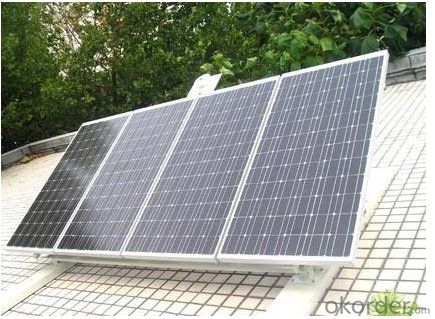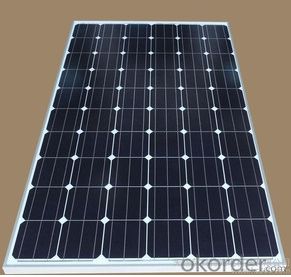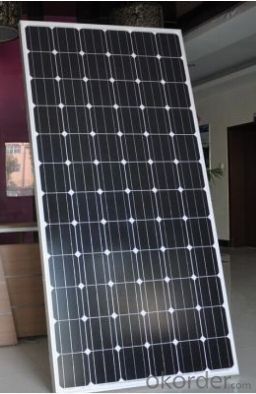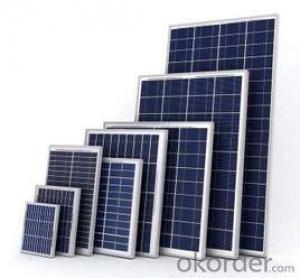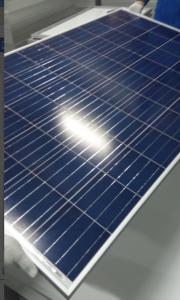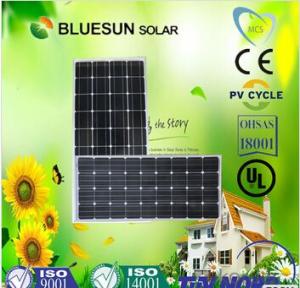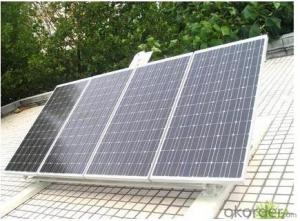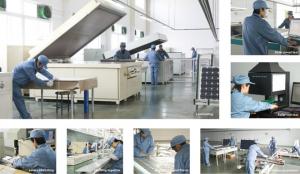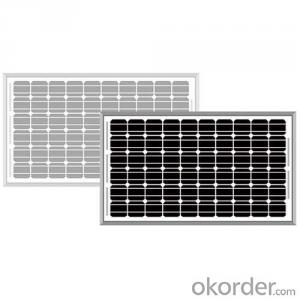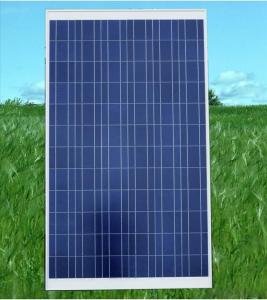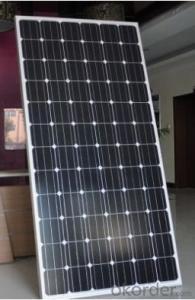1000 Watts Monocrystalline Solar Panels for 305w Series
- Loading Port:
- Shanghai
- Payment Terms:
- TT OR LC
- Min Order Qty:
- 100 pc
- Supply Capability:
- 100000 pc/month
OKorder Service Pledge
OKorder Financial Service
You Might Also Like
Description:
1.Structure of Monocrystalline Solar Module for 305W Series
Monocrystalline Solar Module for 305W l : High efficiency crystalline solar cell. Even if under the weak light, the solar module can produce maximum power output.
II Tempered glass (toughened glass): Anti-reflecting coating and high transmission rate glass increase the power output and mechanical strength of solar module.
III EVA and TPT: Using high quality EVA and TPT to prevent destroying and water.
IV AI frame: Without screw, rner connection. 6 holes on the frame can be installed easily.
V Junction box: Multi function junction box with water proof.
VI Long lifetime: ≥25 years; Less power decrease.
VII Good performance of preventing from atrocious weather such as wind and hails.
VIII Resisting moisture and etching effectively, not effected by geology.
IX The certificate issued by international authority: UL, TUV, IEC, CE.
2. Standard Test Conditions of Monocrystalline Silicon Solar Panel:
The opto-electrical specifications shown below are stabilized values being measured at Standard Test Conditions, Irradiance: 1000W/m2, Spectrum: AM1.5 at 25°C, The info below is subject to manufacturing tolerances. Where appropriate minutes of measurement are available and are used for the dimensioning of the installation.
Advantages of Monocrystalline Silicon Solar Panel
• CNBM Solar performance guarantees for 25 years
• 12 years guarantee for workmanship
• Timeliness of delivery
• Quality Products certified (TÜV, UL, CE, ISO)
3. Solar Panel Images
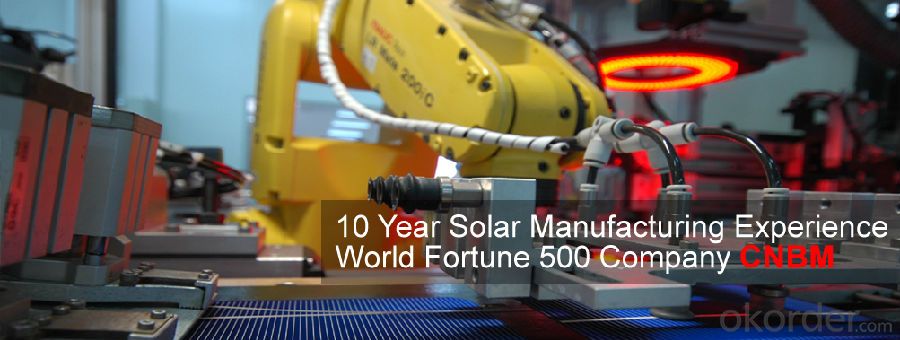
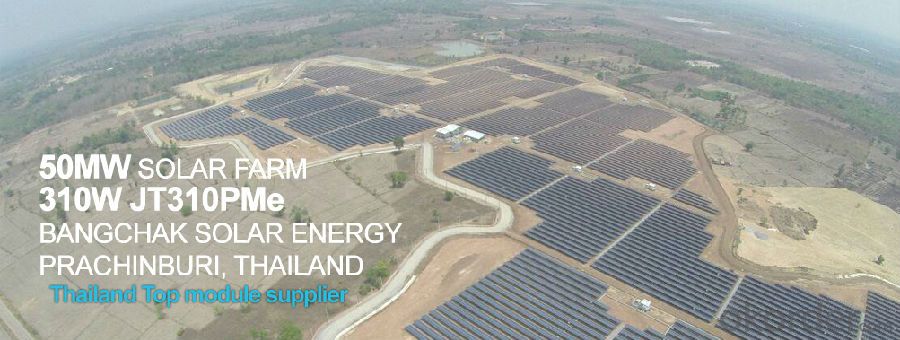
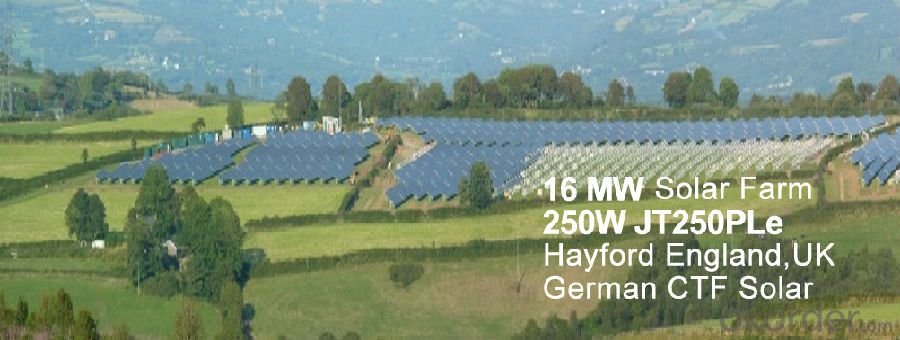
4. Solar Panel Specification
Characteristics

Temperature Coefficient of Cells

Mechanical Data

Limits

Guarantees

IV Curve

5.Quality certification and certificate
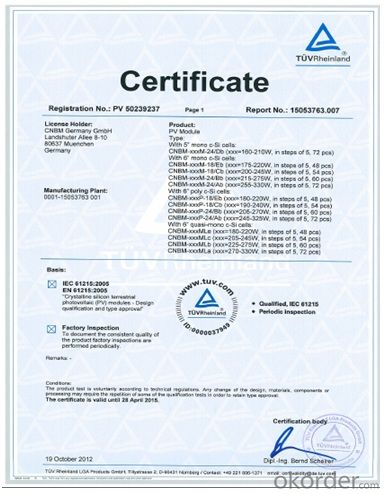
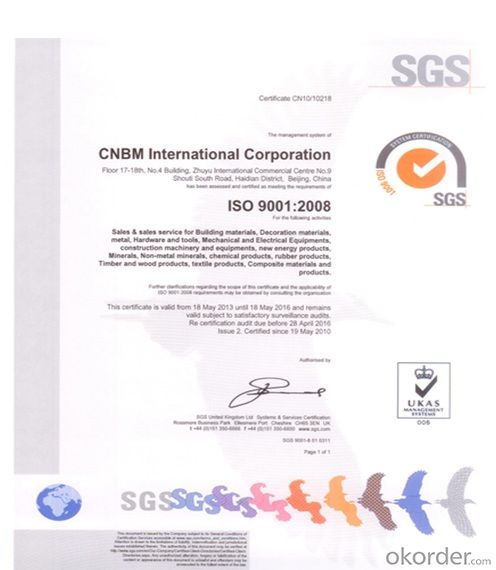
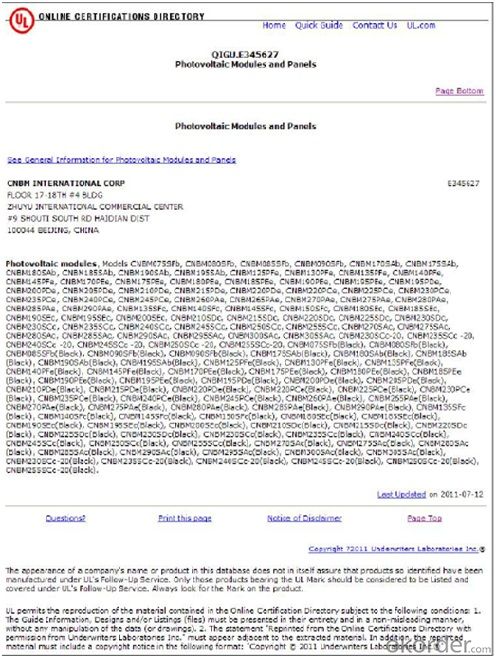
6.FAQ
We have organized several common questions for our clients,may help you sincerely:
①How about your company?
CNBM Solar photovoltaic (PV) Panel has various wattage from 1.5W to 315W to meet the demand of every customer. It is the optimal choice for both on-grid and off-grid power systems. CNBM Solar panel offers high performance of power warranty and good after sale service, we have professional people to reply your problem anytime.
CNBM International Corporation's products including Monocrystalline Solar Panel, Polycrystalline Solar Panel have received and enjoyed famous reputation in many countries and regions in the world .As a solar panel supplier in China, we strive to provide our customers with excellent service, superior products and unmatched value.
②How to guarantee the quality of the products?
CNBM Solar performance guarantees for 25 years
• 12 years guarantee for workmanship
• Timeliness of delivery
• Quality Products certified (TÜV, UL, CE, ISO)
③How long can we receive the product after purchase?
In the purchase of product within three working days, We will arrange the factory delivery as soon as possible. The pecific time of receiving is related to the state and position of customers.Commonly 7 to 10 working days can be served.
- Q: Can solar panels be used to power a gas station?
- Yes, solar panels can be used to power a gas station. By installing solar panels on the roof or surrounding areas of a gas station, the generated solar energy can be used to power various equipment and operations, including fuel pumps, lighting, air compressors, and other electrical systems. This can help reduce the reliance on traditional grid electricity and lower the environmental footprint of the gas station.
- Q: So my buddy and I have an idea to start a small Solar Installation business. Small as in I am only willing to do one weekend a month and two weeks a year(I know it sounds like the reserves). These are my specific question:) What is the average cost in the U.S. to have Solar Panels installed?2) What is the average cost in the state of Hawaii to install Solar Panels?3)Is this a worth while venture? (There's a good chance i'm going to ignore this one anyways LOL!)4)How long does it take to install a photovoltaic solar panel?5)How long does it take to install a hot water solar panel?6)Besides the obvious, what permits are needed to get our start?7)What education or Cert. is needed?8)Average time to start up?If there is any other information you believe pertinent to this subject that I didn't ask directly, please share. Thank you for your help in advance!
- the fee relies upon on many aspects. What length is your relatives and how a lot warm water do you take advantage of? Which route does your position roof face? Its perfect and most inexpensive once you've component to roof that faces South. What form of cutting-edge warm water gadget do you've and how a lot artwork will be necessary to connect it to image voltaic. the position precisely is your position? What u . s . a ., what component to the country, what different aspects want to be considered like timber, different homes and so on.? What form of image voltaic panel do you want - flat panel or evacuated tubes? Tubes are extra intense priced yet provide extra warm water for an prolonged era on a daily basis. visit the Retscreen cyber web website. Its subsidized by the Canadian authorities and has diverse information for layout and costing of image voltaic, wind or hydro kit everywhere interior the international. It has instantaneous links to kit manufacturers, climate documents and each thing you'll want depending on the area of your position. it could also make an entire fee earnings calculation for you. That way you could attitude contractors with finished preparation and able to make an suggested negotiation over expenditures.
- Q: Why can not the solar panel load directly?
- Power supply must be a number of individual battery strings, connected in parallel and tightly packaged into components.
- Q: How much candle lights is required to operate a 205 watt solar panel?
- The intensity of direct sun is about 0,000 foot-candles. It would not be practical to light that many standard candles and put them foot away from the panel, but you could supply that intensity with electric lighting. That's in fact how they establish the power ratings of a given panel; they have a rig that provides a standard test condition of sun.
- Q: Can solar panels be installed on south-facing windows?
- Yes, solar panels can be installed on south-facing windows as long as the windows receive sufficient sunlight throughout the day.
- Q: Composition and function of solar panels
- The demand for polysilicon is mainly from semiconductors and solar cells. According to the different requirements of purity, divided into electronic and solar level.
- Q: How hard is it to install solar energy panels on your house? Is this a reasonable way to produce 00% of your house's energy? Is there any danger?
- Hi okorder
- Q: I got a really great deal on 2 houses because they were fixer-uppers. I'm living in one and the other I'm renting out. However, the previous owner did everything himself in 950 95, so needless to say, things are not to todays standards. Both houses need rewiring (there are no ceiling lights, few outlets, and mine has two old fuse boxes and the other has a breaker box but it pops the breaker a lot). The only reason they are still functional is because both houses use natural gas for water and heat, so otherwise, they electrical work is getting us by, but who knows for how long. I thought that maybe instead of redoing the electric, that I could just add solar panels to compensate for the small electric boxes. Also, since I would have to hire electricians to do all the work, which would be more cost effective (not including the decrease in utilities since I don't pay the utilities in the rental anyways)?
- A solar panel does not replace the wiring in your house. All it does is supply power to the house, the same way a line in from the street does. After the power gets to the house, regardless of how it got to your house, it goes through exactly the same wiring to get to outlets and lights. Your problem is not that the power coming in from the street is insufficient; the power company can supply all you'd ever need. The problem is that your houses are not wired to receive or use more power. You need to upgrade the service panel so it can bring more power into the house, and upgrade the wiring inside the walls so you have the number of outlets and lights required by today's codes and which most of us need for all the things we plug in these days. Solar panels, while they are cheaper than ever, are not a low cost thing to install. It will take years to recover their cost, and if the rules are the same where you are as they are here, you can't use the cost of installing them as a write-off against the cost of the house until you sell it. They are a capital expense, not a maintenance and repair deduction which you can use each year against the income you receive from the rental. Doing a conventional rewiring is your best bet.
- Q: Can solar panels be used for powering agricultural equipment?
- Yes, solar panels can be used for powering agricultural equipment. Solar energy can be converted into electricity, which can then be used to power various agricultural machinery and equipment such as pumps, irrigation systems, electric fences, and even small tractors. This helps reduce reliance on traditional fossil fuels, promotes sustainable farming practices, and can save farmers money in the long run.
- Q: Can solar panels be used in areas with high levels of bird or bat activity?
- Yes, solar panels can be used in areas with high levels of bird or bat activity. However, certain precautions should be taken to minimize potential risks. For instance, installing bird deterrents like netting or spikes can prevent birds from nesting or perching on the panels. Similarly, incorporating specialized designs or modifications can minimize the impact on bats. By implementing these measures, solar panels can coexist with bird and bat populations while still harnessing the sun's energy efficiently.
Send your message to us
1000 Watts Monocrystalline Solar Panels for 305w Series
- Loading Port:
- Shanghai
- Payment Terms:
- TT OR LC
- Min Order Qty:
- 100 pc
- Supply Capability:
- 100000 pc/month
OKorder Service Pledge
OKorder Financial Service
Similar products
Hot products
Hot Searches
Related keywords
